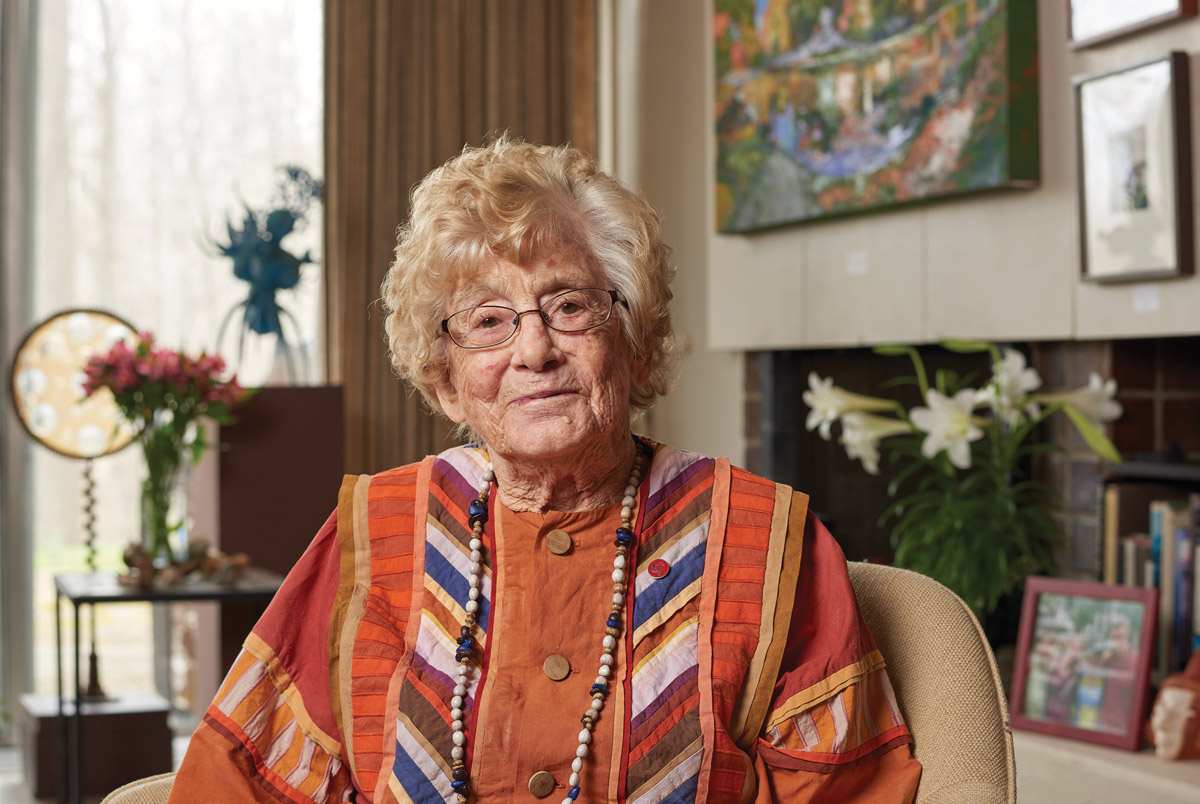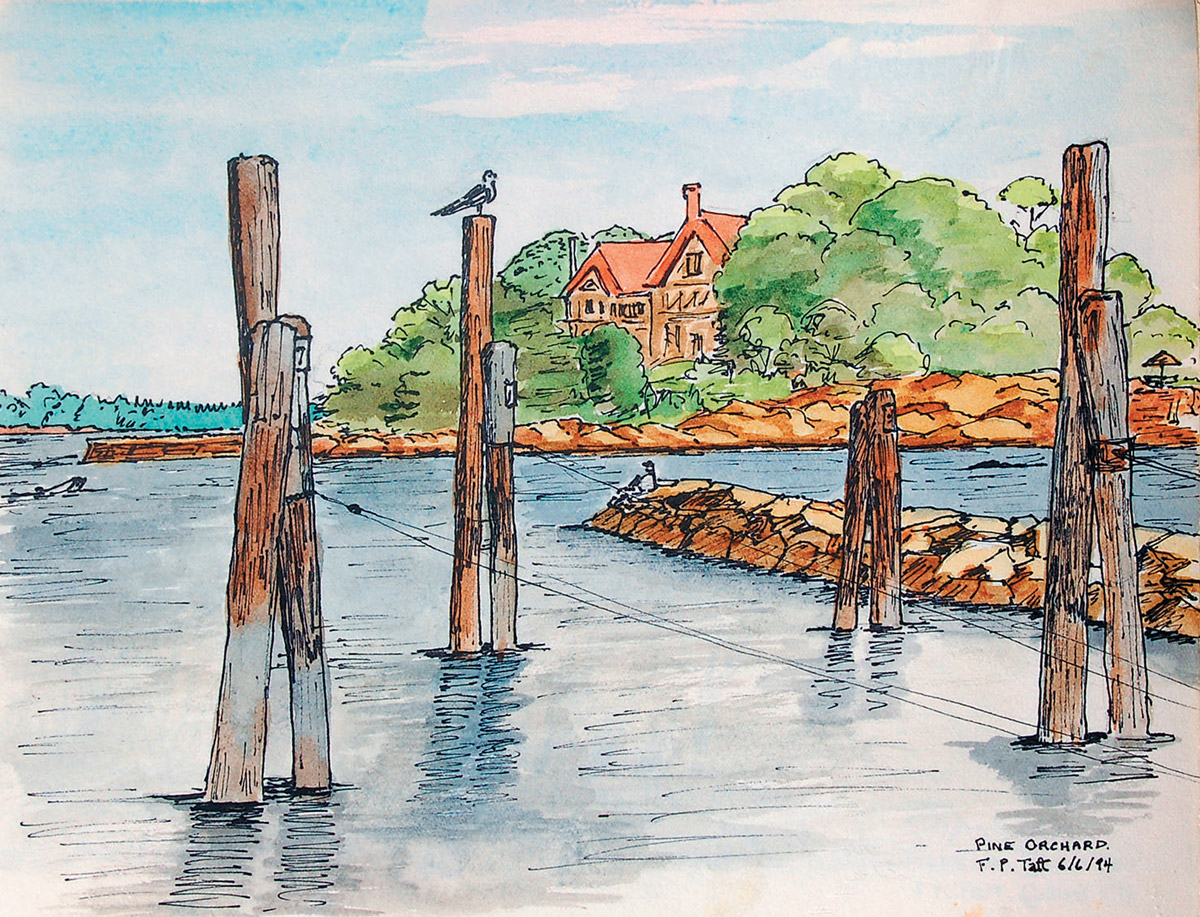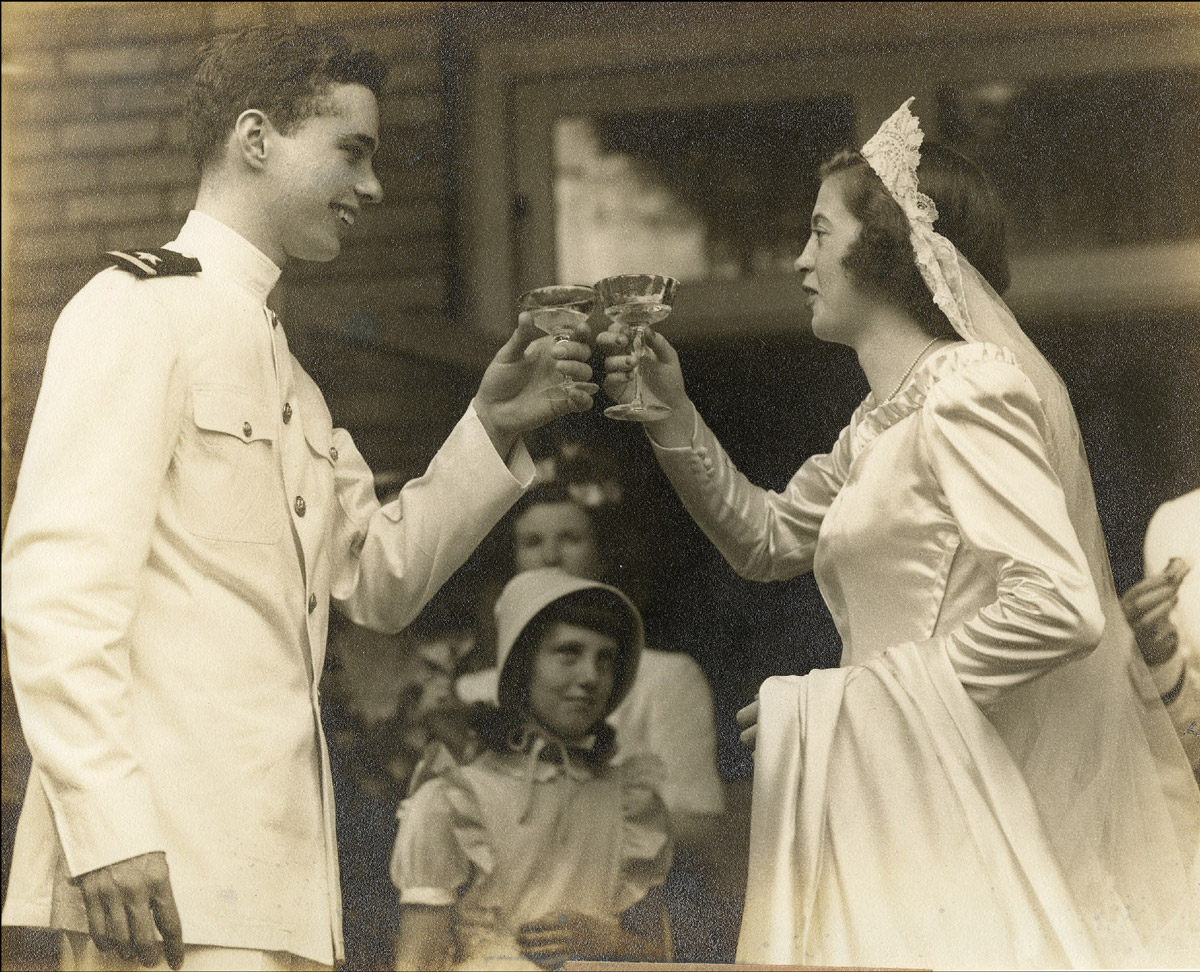Sketches from Life: Frances Prindle Taft '42

Frances Prindle Taft ’42, known by just about anyone who has met her as “Franny,” recently published the autobiography Sketches from Life: A Memoir. And what a life it has been—from her childhood in New Haven, CT, to her time at Vassar on the precipice of World War II, to her service in the newly established naval reserve unit the WAVES, to a career as an award-winning art historian, and on to raising a family with her late husband, Seth.
One can hardly imagine how Taft found time to do anything else—let alone become one of Vassar’s most reliable, active, and influential volunteers. Her memoir contains enough memories to fill a two-volume set. They not only present the details of Taft’s adventures, but also allow the reader to view paintings and drawings she has done during her travels.
Taft says she was on the fence about writing a memoir until her son Rick, who had already written a couple of books, told her she’d never be able to do it. “First of all, it’s a terrible drag,” he said. “You’d never have the patience to write a book.”
She took it as a challenge.
Acknowledging her deficiencies in typing, she began dictating the book to her secretary, Barbara Glasener. “There was no first draft and then rewriting and so on,” Taft told Lisa Tessler, Associate Vice President of Alumnae/i Engagement and Executive Director of the Alumnae and Alumni of Vassar College (AAVC), during a recent visit to Taft’s home. “I just talked the book to her and said, ‘This is the way it is.’”

It’s no surprise that a good chunk of her memoir involves her time at Vassar, a college she feels is still “without equal.”
“It is full of the most interesting people,” she says. “The students are bright and interesting and come from different backgrounds, and the faculty are certainly interested in the students.” This is not necessarily the case at other colleges, she notes.
Taft attended Vassar at a time when many interesting—and colorful—characters walked the halls. Among them were the beloved President Henry Noble MacCracken (known to most as “Prexy”); Hallie Flanagan, who taught drama at the college and headed the Federal Theater Project during the Depression; and Scottie Fitzgerald ’42, daughter of troubled writers Zelda and Scott.
“Prexy and I played tennis together a lot, but he never knew my name,” she recalls. “That was pretty typical, though. Prexy wasn’t great at names. Hallie was the faculty member that so many of my friends were really attracted to. My roommate was a drama major and very close to Hallie. So, I would say I knew her secondhand. On the other hand, Scottie was one of my good friends. She was kind of interesting because she was dependent on her father. One day she’d have a wonderful new fur coat and the next week she would be in rags, so to speak. She never knew what was coming. It was a very insecure life.”
While at Vassar, Taft was an avid “jock,” a member of the tennis, field hockey, swimming and diving, basketball, and squash teams. (Her status as an athlete continued long after she graduated; she competed nationally as a tennis player into her eighties.)
One of Taft’s most vivid memories of Vassar involves being at Prexy’s house when she heard the news about Pearl Harbor. The MacCrackens, whom she recalls were pacifists, used to have students for lunch on Sunday afternoons. One of her classmates interrupted their after-meal entertainment to break the news.
“Nobody knew what to say,” she says. “One by one we said goodbye to Prexy and his wife and went back to our rooms. That same day, a couple of gals lost their husbands or fiancés, so it’s a day I won’t forget.“
She graduated from Vassar a few months later, and almost immediately enlisted in the new U.S. Naval Reserve’s Women Accepted for Volunteer Emergency Service—the WAVES—as part of its first officer class.
Looking back on her decision to enroll in the “grand experiment,” she says, “I didn’t want to join something where you just got a hat and you went around sleuthing. I wanted to be in the real navy.” So she consulted Mildred McAfee Horton, Class of 1920, who had left an appointment at Wellesley to direct the nascent unit, and was relieved to hear it was going to be “for real.”

Things happened quickly from there. “Within two weeks I got orders to go to New York to take a test.” Then soon after, she says, “I got invited to come back to New York and they said, ‘Hold up your right hand,’ and I was in the navy. I came home and I said, ‘Mom, guess what!’”
Her boyfriend, Seth—an enlisted man who later became her husband—wasn’t happy when he learned of her decision, but he came around. “Anyway, it was a wonderful service. I taught codes and ciphers and it was all business,” she says. “You realized that, having signed up, you were doing something that needed to be done, and so that was very worthwhile.”
But being in the navy at the same time did put a bit of a wrinkle in the couple’s plans to get married. Taft says, “The navy regulations said that an officer could not fraternize with an enlisted man. And I thought, well, certainly marriage would be fraternizing. So I decided that I had better wait until he had his stripe.” They were married in 1943 after Seth became an officer, too.
She and Seth went on to have four children—Frederick, Thomas, Cynthia, and Tucker—and welcome 10 grandchildren (one of which, Seth Chase Taft, graduated from Vassar in 2005) and several great-grandchildren before her husband passed away in 2013.
Though Taft had been a biology major at Vassar, she minored in art history, and went on to make her career in art education, teaching at the Cleveland Institute of Art after earning a master’s degree in art history from Yale in 1948. During her 62-year tenure at the Institute, she even served as chair of the department. She earned the Cleveland Arts Prize (Special Citation for Distinguished Service to the Arts) for her contributions to teaching in 1995.
Looking back on her choice of major and minor, she says: “Biology and art history are not that far apart. But people think they are. One of the things I noticed is that almost all of my artist friends at the Institute were naturalists, and they all loved animals and biology. I wanted to major in something I was good at, and I was good at biology. And I wanted to take art history at Vassar because it is absolutely tops, one of the best departments ever, and I loved it.”
She credits Seth, a graduate of Yale, and Vassar’s reputation with helping her get into the school’s graduate art history program. “He went to see the dean and he said, ‘You know, my wife wants to come to Yale.’ And the dean said, ‘Well, where did she do her undergraduate work?’” He said, ‘At Vassar.’ And the dean said, ‘She’s in!’”
After graduate school, she and Seth settled in Cleveland, but Taft could frequently be found back East in Poughkeepsie. In her memoir, she describes the town as a “second home” and as “a habit that I couldn’t and didn’t want to break.” Indeed, since graduating she has been one of the college’s most consistent supporters and volunteers. From 1972 to 1985 Taft served on the college’s board of trustees. She also served on the boards and various committees of the Vassar Clubs of New Haven and Cleveland; as president, secretary, and 25th-reunion chair for her class; as a member of the board of the Friends of the Frances Lehman Loeb Art Center; and as an active volunteer with the college’s Development Leadership Council.

Among the many volunteer positions she’s held at Vassar, her presidency of Vassar’s Alumnae Association from 1965 to 1971—the years during which Vassar wrestled with the decision to go coed—may have been the toughest.
“Those were the hot and busy years,” Taft recalls; many alumnae were in up in arms over Vassar’s discussions about a possible merger with Yale. She says, “People were often turning to me and saying ‘What do they think?’ I knew what I thought, and I had a pretty good idea of what the alumnae thought: They did not want to go to Yale.”
Vassar alumnae were known for jotting off angry notes when displeased, and Taft says, “I answered every letter I got. In the long run, that held the alumnae together because they knew somebody was listening to them.” (Taft’s correspondence now resides in Vassar’s Archives and Special Collections.)
She once told the Vassar Quarterly that she had been “determined to keep Vassar alive and independent,” despite also having strong ties to Yale. (Six generations of her family have attended—her father, grandfather, husband, and grandchildren, in addition to Taft herself.)
In lieu of a merger, she urged Vassar to go coed. By that time, the tide—even among alumnae—seemed to be shifting in favor of coeducation. Many thought it inevitable; other colleges seemed to be trending in that direction.
“Everything worked out,” she told the VQ. “It was a wise decision at that moment in educational history.”
For her leadership during this tumultuous period and others, she was named the first recipient of the AAVC Award for Outstanding Service to Vassar College in 2001. She received the award once more in 2011, along with other former presidents of the alumnae/i association.
She recounts many of her Vassar stories in her memoir, though her drawings and paintings are mostly of places she has traveled—from her summers in Pine Orchard, CT, to the streets of Bonifacio, Corsica.
Taft is quick to chuckle when asked if she had ever received formal training in art making. “I have to say I was self-taught. I wouldn’t blame me on anybody,” she replies.
“I’m not an artist, but when I was little, I drew all over everything. We had this funny lady who came from Europe to see my mother and she said, ‘Who does all this doodling on the telephone?’ And my mother said, ‘That’s Franny.’ We became friends. She always thought I was an artist. But I’m not.”
Those who read her memoir might well disagree. Her lively drawings and recollections illustrate a full and rich life—the life of one of the most interesting, colorful, and … beloved Vassar alumnae/i.
